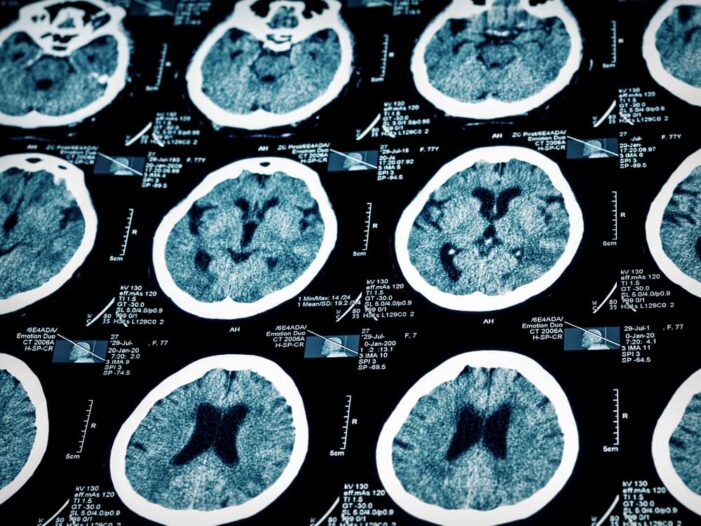By Linda Nwoke, Exclusive to New Black Voices
Alzheimer’s disease is among the top seven in the United States with no cure, and despite the introduction of exciting treatments that slow its progression, the absence of a cure has remained a challenge. Generally, any form of memory loss affects an individual’s daily activities and is deemed abnormal, often requiring consultation with a medical professional for an early diagnosis. Alzheimer’s is a unique form of dementia (loss of memory); it is the only one on the rise among the top ten causes of death in America and has a staggering over 50% annual increase.
Sadly, it continues to disproportionately affect communities of color, especially African-American communities, because of the lack of early diagnosis, which has remained elusive for many of them. Consequently, there is a recognizable barrier to receiving timely and high-quality care, including participation in crucial clinical trials.
Researchers have projected that by 2060, there will be a four-fold increase in Alzheimer’s cases among black Americans.
Such facts have led many experts to gather to address the issue, including a group of panelists at the Health Matters webinar that talked about some of the challenges related to Alzheimer’s, difficulties faced by families navigating biased and discriminatory healthcare systems, and other issues.
The Varying Dimensions of the Disease
Stephanie J. Monroe, Vice President and Senior Advisor of Health Equity and Access at USAgainstAlzheimer’s, provided a national perspective on the crisis and a personal story that revealed her connection to the disease with the story about her father’s diagnosis three years after she started working on an Alzheimer’s project in 2010. In her experience, Alzheimer’s is a unique disease that affects a complex, underexplored, and not fully understood organ called the brain. An illness that goes beyond mere memory loss has a complicated impact on the brain.
Reflecting on her work, Monroe insists that there is a need for an increase in awareness of health disparities, barriers to diagnosis, treatment, and preventative measures for Alzheimer’s, especially for marginalized populations. She emphasized the importance of providing options for treatments, accurate diagnosis, and caregiving opportunities, especially in black communities that have a high prevalence of Alzheimer’s.
Drawing on her personal experience and her father’s ten-year journey with Alzheimer’s, she affirmed that the disease affects every member of the family. According to her, “If one family member has Alzheimer’s, everyone does.”
Furthermore, she noted that the disease is unique and has varying plateaus and changes. “There is a pervasive impact of Alzheimer’s beyond memory loss; it affects essential bodily functions, including breathing and swallowing. The disease’s progression is slower in the black community, creating both advantages and challenges,” she said.
Within the black community, the main challenge includes delayed diagnoses, which contribute to the reduced effectiveness of available medications and leave a disproportionate impact on African Americans, “with a rate at least twice that of non-Hispanic white Americans and Latino Americans experiencing it at least one and a half times more,” says Monroe.
The senior adviser highlighted the relationship between Alzheimer’s, vascular issues, and other chronic diseases, which have been studied over the years to ascertain predictors of the disease. She hinted that social and structural determinants of health in black and Latino communities, such as education quality, environmental factors, nutrition, and opportunities for exercise, are contributory factors to the prevalence of Alzheimer’s in marginalized communities.
“Through a better understanding of the relationship between biology and genetics, researchers are beginning to query other variables like the influence of one’s living, growing, and working environment in the disease,” says Monroe.
Presently, there is a map that shows the prevalence of Alzheimer’s across the United States. Monroe explained, “Notably, higher prevalence is observed in the region known as the stroke belt and along the southern part of the country, stretching from Texas to New York. Specifically, the highest rates are in Florida, Maryland, and New York.”
She also underscored the need for distinct strategies in diagnosing, treating, and projecting outcomes for various types of dementia, emphasizing the importance of early intervention. “While dementia incidence increases with age, it is not a normal aspect of aging,” she explained.
The Daily Realities and Challenges Facing Black Communities
Petra Niles, a gerontologist who is the Senior Manager, Education & Outreach, African American Community delved into the daily realities faced by the black community. She highlighted the heightened risk and pervasive challenges of navigating the disease alongside other existing chronic conditions like hypertension and diabetes. Niles stressed the importance of Access to care, particularly for routine check-ups to monitor critical indicators like blood pressure and blood sugar.
Based on experience, specific factors that made managing the disease difficult were identified. For instance, transportation issues often hinder individuals from accessing services like comprehensive evaluations from hospitals, thus underscoring the systemic barriers to proper healthcare within communities.
“When a primary physician recognizes that their patient has some concerns that are out of control, what can they do at that space to assist the families? Knowing your numbers is essential for our community to be aware of, “says Niles.
Furthermore, individuals need to plan legally and financially as they age because medical conditions have been established to impact decision-making abilities, especially with limited finances for caregiving, housing, and essential supplies not covered by health plans.
Niles also reiterated the critical need for respite for caregivers, acknowledging that each family has unique needs. In her view, “respite isn’t solely about having someone relieve the caregiver for a few hours but can involve taking the loved one to an adult day program, providing both rest for the caregiver and engagement for the individual. ”
Additionally, she encouraged caregivers to engage in self-care. According to Niles, “self-care is critical. This journey can go on for many years, and some individuals I’m aware of have been caregivers for 15 or more years. That’s a long time, especially when there is no support,” she says.
Overall, multifaceted factors can pose a challenge in managing the disease, including self-stigmatization, a lack of early detection and awareness, and inadequate resources.
Petra stresses, “Getting an early diagnosis is critical. I receive many calls from family members who say I see this, and I see that. I must educate them about not diagnosing anyone because this is difficult to interpret anyway.”
Providing the necessary resources remains vital to a better outcome, like giving the family members the resources they need to understand the disease helps them support their family members. She reiterated the importance of understanding some of the nuances that come with Alzheimer’s, such as the different forms of stigma, including self and community/societal stigma.
“So, in a conversation, as I listen, I ask myself, What is it that I’m hearing? Am I hearing that the person with the potential disease is exhibiting self-stigma? Or is it community-societal stigma?”.
Addressing the issue of stigma is pertinent, as it often prevents individuals and their families from reaching out for help.
The Role of the Media
Kat Stafford, a former reporter at AP, contributed to the conversation by highlighting the role of the media; she shared details about her in-depth coverage of how structural racism contributes to inequity across America, as recorded in her work “A Lifetime of Racism makes Alzheimer’s more common in Black Americans.”
Her work reinforced the fact that black Americans are more likely to experience the disease from a combination of not just genetics, which plays a significant role, but other medically proven risk factors linked to community environments.
Limited access to healthy food choices, limited availability of vegetables, and residing near polluting industries compound these risks. Stafford shared that the quality of healthcare in these communities further exacerbates the issue, with families sharing disturbing interactions with health professionals during their Alzheimer’s journey.
There is also a historical context of the health disparities, dating back to the 1800s; through several generations, factors like structural racism, redlining, discrimination, and segregation have also been longstanding contributors to generational inequities.
Based on the varying evidence and contexts, tackling Alzheimer’s disease within marginalized communities will require a multilayered and multifaceted approach. However, every little effort within the complex landscape will make a difference in how the disease will impact the black community.


